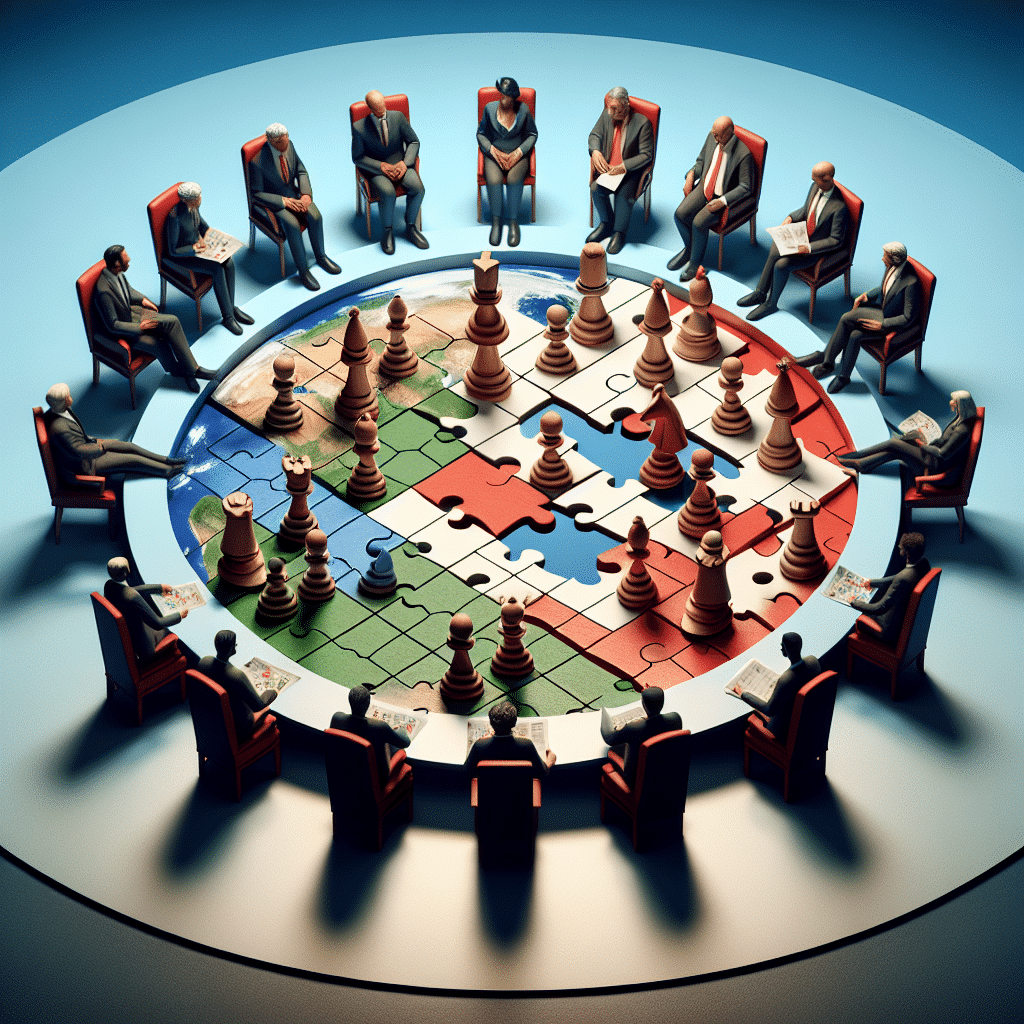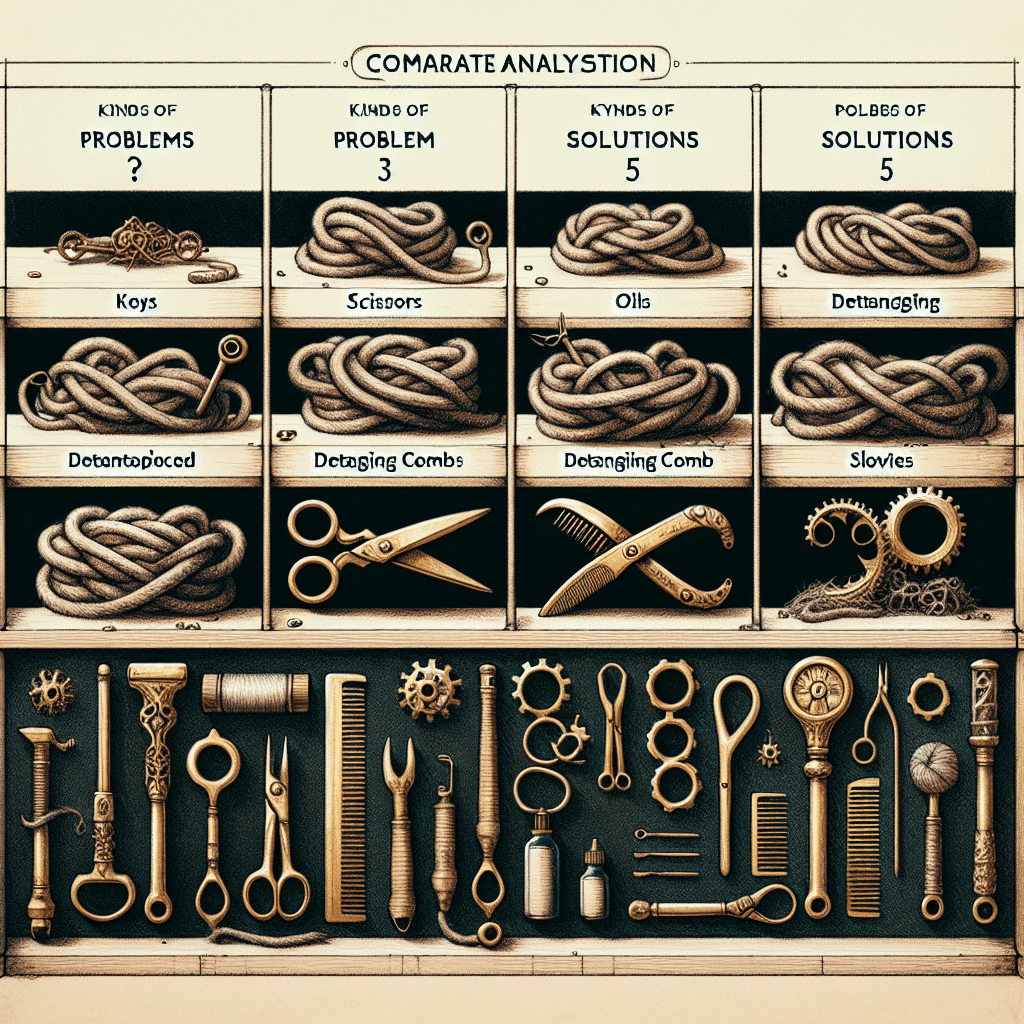
Problem-solving in politics goes beyond identifying and resolving issues; it requires navigating complex power dynamics and considering multiple perspectives. Understanding the political aspects of problem-solving is essential for policymakers and stakeholders to address challenges effectively. In this blog post, we will explore the steps involved in political problem-solving, including defining the problem, strategizing solutions, analyzing political implications, exploring potential solutions, and crafting a path forward. By incorporating these approaches, we can drive positive change and foster a more inclusive and responsive political system.
Defining the Problem
Effective problem-solving in the political arena begins with a clear definition of the issue at hand. This step is crucial because it lays the foundation for developing appropriate solutions. Defining a problem in politics involves conducting thorough research, gathering relevant data, consulting experts, and understanding the various nuances surrounding the issue.
Identifying a problem requires delving deeper than surface-level observations. It involves asking critical questions: What is the underlying cause of the issue? Who is affected by it? What are the potential consequences if it remains unresolved?
A substantive problem statement should articulate the core issue while considering the perspectives of all relevant stakeholders. It provides a shared understanding of the problem, which becomes essential when collaborating on solutions and garnering support. A well-defined problem statement helps to align efforts and ensures that proposed solutions accurately address the root causes rather than merely addressing symptoms.
Moreover, defining a political problem requires recognizing the complexities and interdependencies within the political landscape. Political problems often arise from policy challenges, social injustices, or systemic issues. A comprehensive examination of these complex problems involves analyzing their historical contexts, identifying the stakeholders involved, and understanding the underlying power dynamics.
For example, when addressing income inequality, the problem statement must encompass a comprehensive analysis of economic policies, social structures, and political factors that contribute to the disparity. This understanding allows for targeted and effective problem-solving strategies.
During the problem-definition stage, engaging with experts and affected communities is vital. Their input provides valuable insights and helps uncover different perspectives that may influence the problem’s scope and potential solutions. By gaining a holistic understanding of the problem, policymakers and stakeholders can develop a comprehensive problem statement that reflects the diverse interests and concerns of those involved.
In conclusion, defining the problem is the crucial first step in political problem-solving. It requires extensive research, consultation, and an examination of power dynamics. A well-defined problem statement sets the stage for developing targeted and effective solutions that address the root causes of the problem. By involving various stakeholders and considering diverse perspectives, policymakers can lay the groundwork for inclusive and impactful problem-solving approaches.
Strategizing Solutions
Once the problem has been clearly defined, the next step in political problem-solving is to strategize potential solutions. This phase involves developing a comprehensive plan of action that considers both the technical feasibility of the solutions and the political landscape in which they will be implemented.
When strategizing solutions, it is important to consider the desired outcomes and the objectives that need to be achieved. These may include promoting social justice, enhancing economic stability, protecting the environment, or addressing systemic inequalities.
One crucial aspect of strategizing solutions is understanding the potential political implications of each proposal. It is important to analyze how the proposed solutions align with the respective interests and agendas of various stakeholders. Identifying potential supporters, opponents, and neutral parties can help gauge the feasibility of implementation and determine the level of political support required.
Crafting a well-structured plan involves considering both short-term and long-term solutions. Short-term solutions focus on immediate actions that address the urgent aspects of the problem, while long-term solutions aim to create sustainable change. Balancing between short-term and long-term solutions is essential for addressing the immediate needs while working towards transformative change.
Collaboration plays a critical role when strategizing solutions in the political realm. Engaging with diverse stakeholders, including community organizations, advocacy groups, and experts, helps build consensus and gather a wide range of perspectives. Collaboration promotes inclusivity, helps build momentum, and brings together resources and expertise to implement solutions effectively.
Furthermore, when strategizing solutions, it is important to analyze the potential benefits and drawbacks of each proposal. Implementing what worked in similar contexts can leverage successful experiences, while considering potential challenges and criticisms helps to refine ideas and develop robust solutions.
Timing is also crucial in defining a strategic plan. Understanding the political landscape and identifying the appropriate time to introduce proposed solutions can increase their chances of success. By aligning proposed solutions with political and social events, policymakers can capitalize on favorable conditions and engage public support effectively.
In conclusion, strategizing solutions requires a careful analysis of political implications, collaboration among diverse stakeholders, and balancing short-term and long-term objectives. By considering the interests of stakeholders, analyzing potential benefits and drawbacks, and identifying the appropriate timing, policymakers can develop a comprehensive plan of action. Through strategic problem-solving, lasting change can be achieved, bringing us closer to a more just and equitable society.

Analyzing Political Implications
When it comes to political problem-solving, analyzing the political implications of proposed solutions is essential. Understanding how different solutions may impact various stakeholders and navigating power dynamics can help ensure effective decision-making and implementation.
One key aspect of analyzing political implications is identifying the interests and agendas of different stakeholders involved. This includes political parties, advocacy groups, community leaders, and other influential actors. By understanding their perspectives and potential reactions, policymakers can anticipate resistance or support they may encounter.
Power dynamics play a significant role in political problem-solving. It is crucial to recognize the power structures at play and assess how solutions may impact these dynamics. Identifying potential winners and losers and understanding how proposed solutions may redistribute or maintain power is important for determining the feasibility and the potential obstacles that may arise during implementation.
Political feasibility is an important consideration when analyzing the implications of proposed solutions. This involves assessing whether the solutions align with the existing political climate and whether they are likely to gain support from key decision-makers and stakeholders. Understanding the political landscape and identifying potential allies or opponents helps strategize effective approaches and build coalitions for successful implementation.
Another crucial aspect of analyzing political implications is considering the potential ethical and moral dimensions of proposed solutions. It is imperative to assess whether the solutions align with democratic principles, human rights, and social justice. Evaluating the potential impact on marginalized or vulnerable groups helps ensure that proposed solutions do not perpetuate or exacerbate existing inequalities.
Political risks should also be evaluated during the analysis of political implications. This includes considering potential backlash, resistance from vested interests, public opinion, and media reactions. By identifying these risks in advance, policymakers can develop strategies to mitigate and address them effectively.
Transparency and communication are crucial during the analysis of political implications. Engaging with the public, holding consultations, and providing clear information about the goals, rationale, and potential impacts of proposed solutions fosters trust and understanding. Open dialogue with stakeholders helps build consensus and creates opportunities for feedback and improvement.
In conclusion, analyzing the political implications of proposed solutions is essential for effective political problem-solving. By identifying the interests and power dynamics of stakeholders, assessing political feasibility, considering ethical dimensions, evaluating risks, and maintaining transparent communication, policymakers can navigate the complexities of political decision-making. Through careful analysis, policymakers can develop solutions that are not only technically effective but also politically viable and ethically sound.
Exploring Potential Solutions
When it comes to political problem-solving, exploring a range of potential solutions is critical to finding the most effective and sustainable approaches. This process involves considering various options, evaluating their feasibility, and weighing their potential benefits and drawbacks.
One approach to exploring potential solutions is to conduct comprehensive research and gather information from diverse sources. This may include consulting experts, examining successful case studies, and analyzing data and evidence related to the problem at hand. By accumulating a wide range of knowledge, policymakers can better understand the complexity of the problem and potential avenues for resolution.
Engaging with affected communities and stakeholders is another important aspect when exploring potential solutions. Their firsthand experiences and insights provide valuable perspectives and can inform the development of effective strategies. By actively involving those who are directly impacted by the problem, policymakers and decision-makers can ensure that proposed solutions are more inclusive and representative.
During the exploration phase, it is essential to foster an environment that encourages creativity and innovation. Encouraging brainstorming sessions, workshops, and open dialogues allows for the generation of new and unconventional ideas. Considering a wide range of approaches, even those that may initially seem unconventional, can lead to breakthrough solutions that address the root causes of the problem.
Evaluating the feasibility of potential solutions is crucial when exploring options. This involves considering technical factors, such as resource availability, financial implications, and policy compatibility. Analyzing the potential for implementation on a large scale and the possibility of sustained impact helps identify solutions that are both practical and achievable.
Considering the potential benefits and drawbacks of each solution is another important aspect. Each proposed solution may have different impacts on various stakeholders, both positive and negative. By conducting a thorough analysis of the potential outcomes, policymakers can make informed decisions and prioritize solutions that offer the greatest benefits while minimizing adverse effects.
It is also important to recognize that no single solution may fully address a complex political problem. Exploring a combination of solutions, such as policy changes, community empowerment initiatives, and public awareness campaigns, may be necessary for comprehensive and lasting change. Taking a holistic approach that considers the interconnectedness of different aspects of the problem can lead to more effective problem-solving.
In conclusion, exploring potential solutions involves conducting thorough research, engaging with stakeholders, fostering creativity, evaluating feasibility, and considering the potential benefits and drawbacks. By considering a range of options and engaging in inclusive and collaborative approaches, policymakers can uncover innovative strategies that holistically address the complexities of political problems. Exploring potential solutions is a crucial step toward achieving meaningful and sustainable change.
Crafting a Path Forward
After identifying potential solutions, crafting a clear path forward is essential for successful implementation of political problem-solving strategies. This phase involves developing a comprehensive plan, outlining the necessary steps, and engaging key stakeholders to work towards achieving the desired outcomes.
Creating a roadmap for implementation requires setting achievable goals and objectives. Clearly defining what needs to be accomplished helps guide the decision-making process and ensures that actions are aligned with the overall vision. Setting measurable targets enables progress monitoring and allows for adjustments if needed.
Engaging stakeholders is crucial during the crafting phase to ensure buy-in, collaboration, and shared responsibility. This includes involving individuals, communities, interest groups, and advocacy organizations that have a stake in the problem-solving process. Building coalitions and partnerships with stakeholders strengthen the collective effort and increase the chances of success.
Developing a timeline and allocating resources are essential components when crafting a path forward. Determining realistic deadlines and identifying the necessary human, financial, and technical resources required for implementation ensures that the plan is feasible and well-supported. Regularly assessing resource availability and making necessary adjustments will help prevent any potential barriers during the implementation process.
Effective communication is paramount during the crafting phase to disseminate information, generate support, and maintain transparency. Regular updates on the progress towards implementation and sharing the outcomes of the problem-solving efforts help build trust and accountability with stakeholders. Tailoring communication strategies to different audiences helps ensure that the information reaches the target audiences effectively.
Continual evaluation and adaptation are also important when crafting a path forward. Regularly assessing the progress, outcomes, and challenges encountered during implementation enables course corrections and the refinement of strategies. Flexibility and adaptability are key traits of successful problem-solving efforts, allowing for adjustments based on feedback and changing circumstances.
In conclusion, crafting a path forward involves setting clear goals, engaging stakeholders, developing a timeline, allocating resources, fostering effective communication, and embracing a culture of evaluation and adaptation. By involving key stakeholders, maintaining transparency, and staying adaptable, policymakers can ensure the successful implementation of political problem-solving strategies. A well-crafted path forward lays the foundation for sustained efforts and meaningful impact in addressing complex political challenges.

Conclusion
Political problem-solving requires a thoughtful and systematic approach that embraces the complexities of power dynamics and multiple perspectives. By defining the problem, strategizing solutions, analyzing political implications, exploring potential solutions, and crafting a clear path forward, policymakers can navigate the challenges of the political landscape and work towards effective and sustainable outcomes. Engaging diverse stakeholders, considering ethical dimensions, and prioritizing transparency and inclusivity are key to successful problem-solving efforts. With these approaches, we can foster positive change, promote social justice, and create a more equitable and responsive political system.






